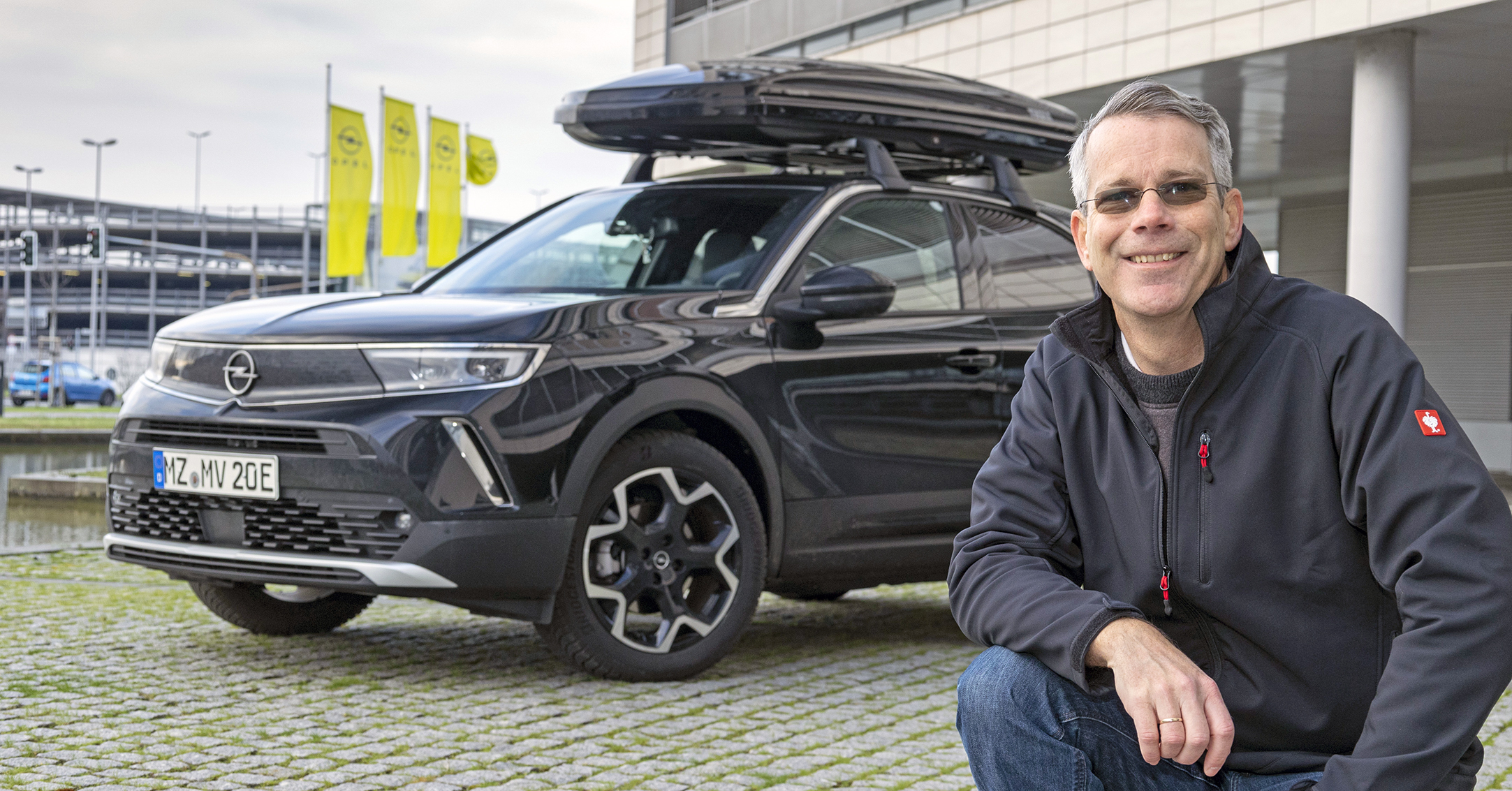Volker Simon is what you call an “early adopter”. He likes to be among the first to try out something new. When he was one of the first to order a battery-electric Opel Corsa-e two years ago, he upgraded his home in Nierstein with solar cells, energy storage and a wallbox to be able to charge the electric car with solar energy. Now he has taken the next step and completely banned the combustion engine from the private vehicle fleet of the four-person household. He relies exclusively on a purly electric vehicle.
His choice was the Opel Mokka-e. Last October, he received the winner of the “Golden Steering Wheel 2021”. And with that, he was in the best of company: that month, the Opel BEV (battery-electric vehicle) was the best-selling electric car in the B-SUV segment in Germany – 56 per cent of all Mokka customers opted for the locally emissions-free variant. Volker Simon presented the electric car to his family and announced: “For the first time, we’ll also be taking it on a skiing holiday.” To Austria, to the Hohe Tauern National Park, which has been the family’s favourite holiday destination for years.
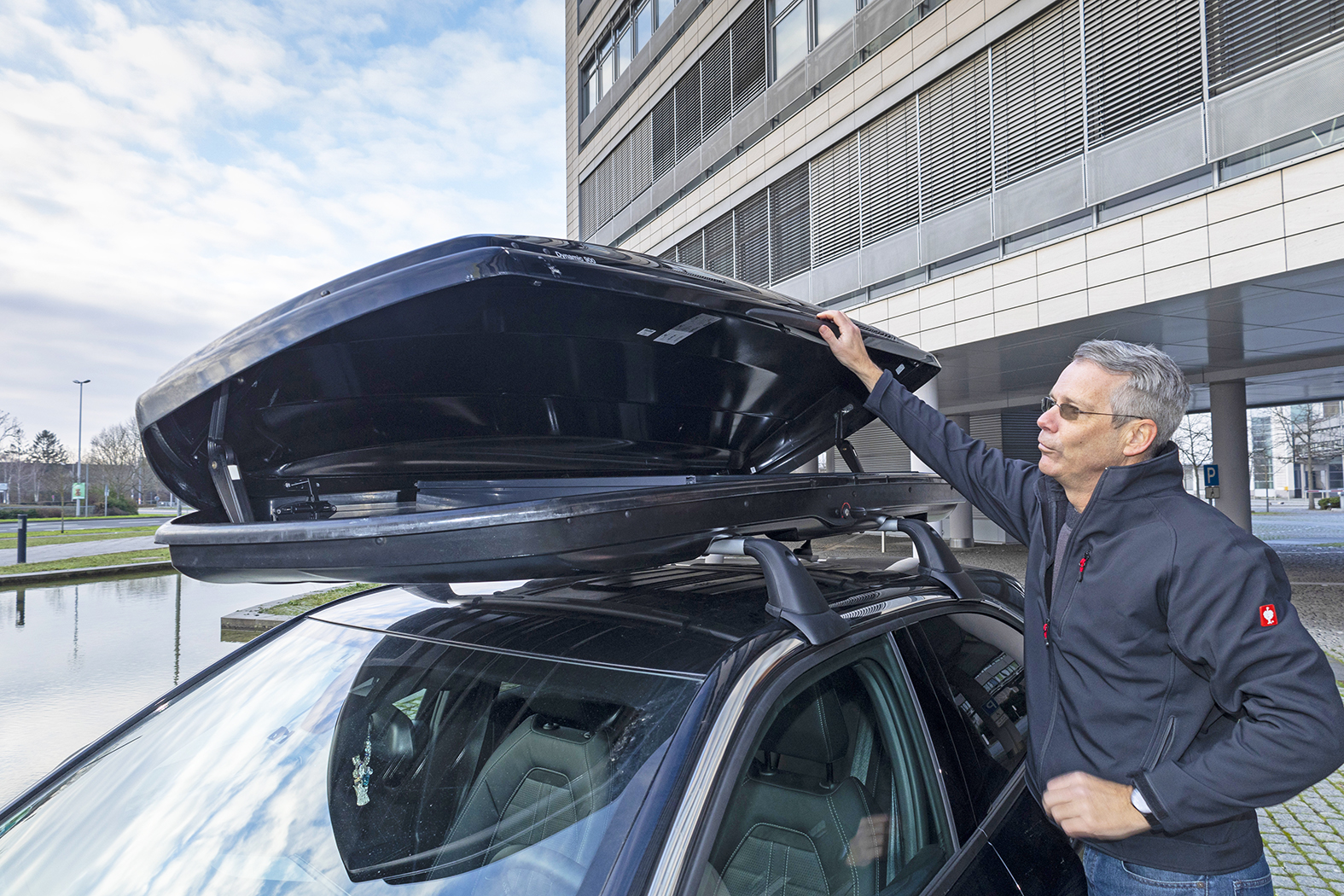
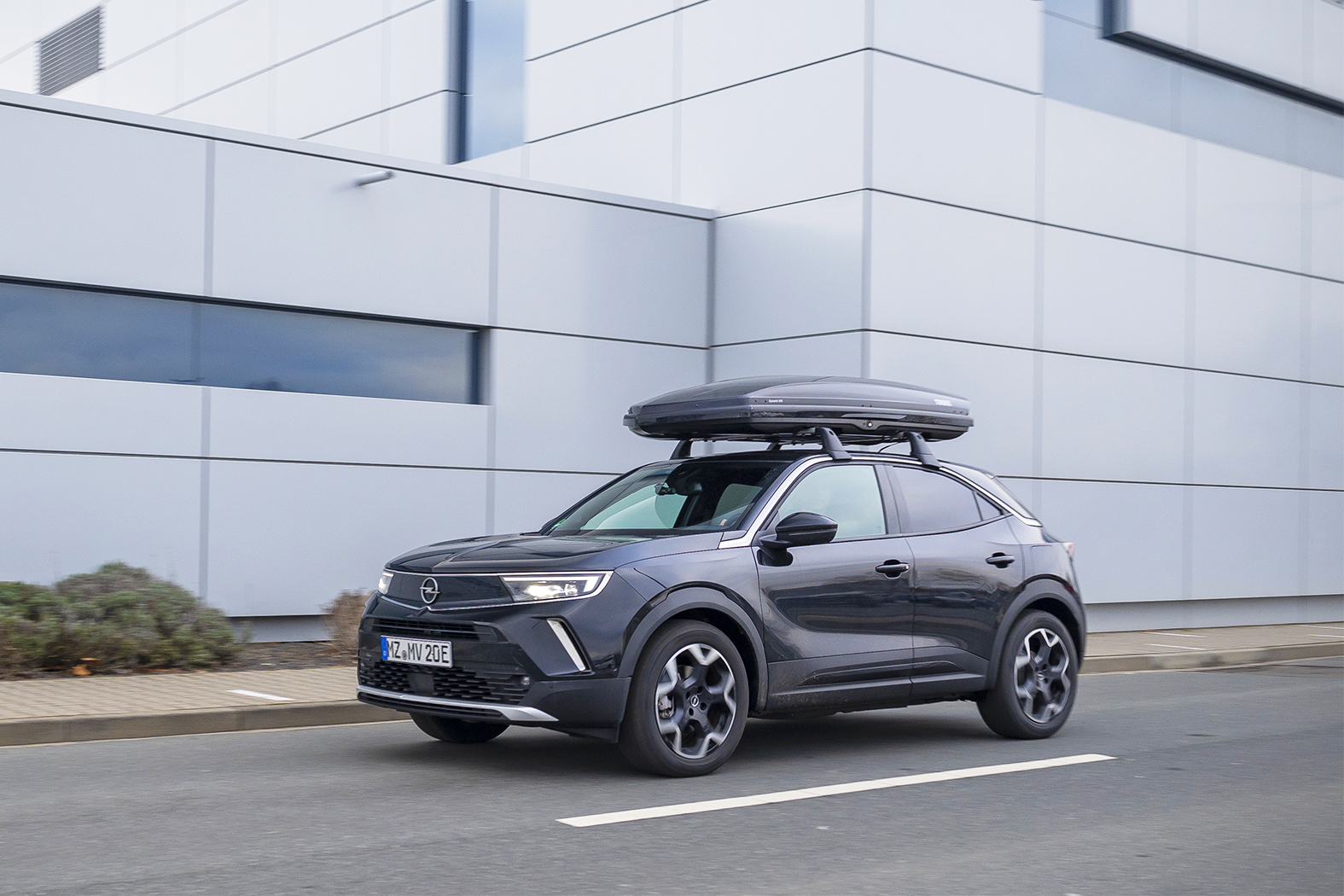
“EVs don’t have to be a second car; they can fully replace the combustion car.”
The Opel engineer, who is responsible for airbags, steering wheels and seat belts in the “Supplier Quality” department, was well aware that such a 600-kilometre drive in the winter would be the ultimate practical test. Not only because additional energy is needed to heat the battery and the interior. The full payload and especially the roof box, which increases wind resistance during the journey, also demand additional electrical power. “By about a third”, he had researched in advance. He therefore calculated the charging stops on the planned route very cautiously for the time being; 200 kilometres for the first leg and 150 each thereafter.
Ultimate practical test
Apart from that, Volker Simon decided to follow a simple rule: when the battery indicator shows only ten per cent remaining, drive to the next charging station. The on-board navigation system shows the nearest possible charging stations. Volker Simon: “Since I only recharge to about 80 per cent – the final 20 per cent take the longest charging time – a charging stop never takes longer than half an hour, even in winter.”
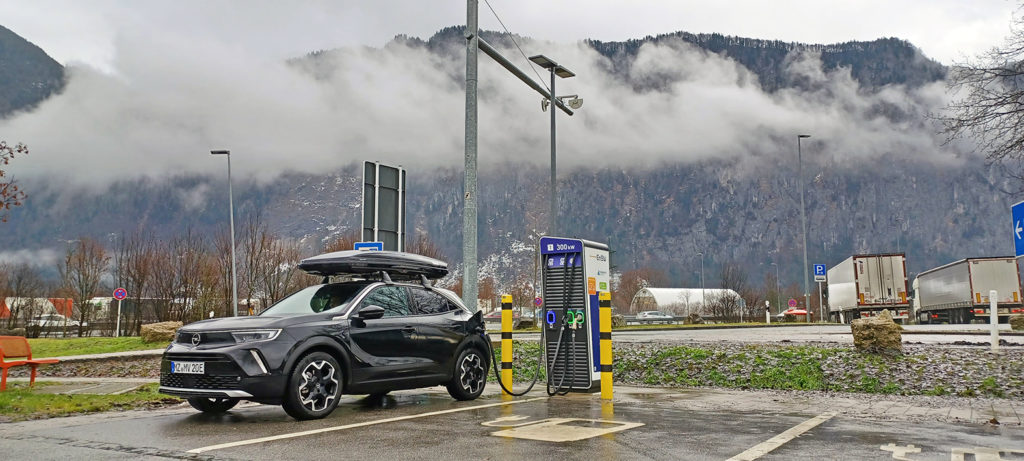
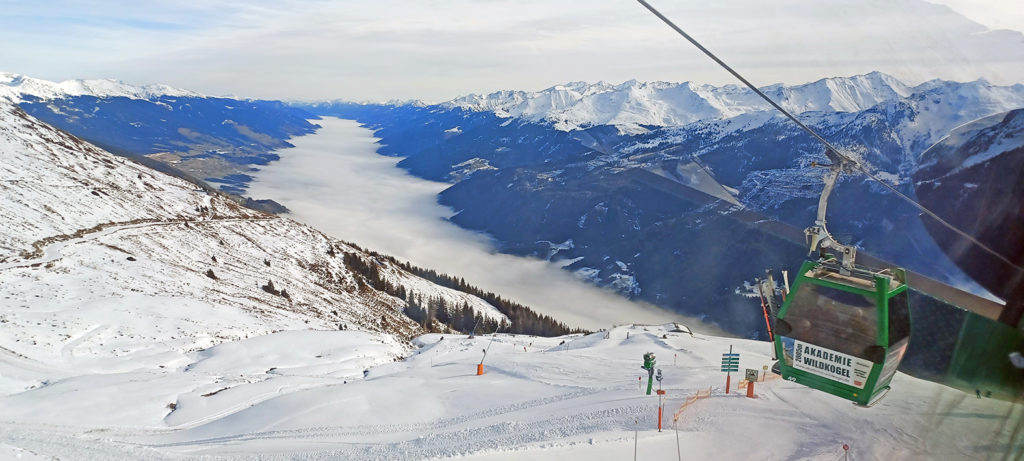
“I always recharge to about 80 per cent – so a charging stop never takes more than half an hour, even in winter.”
The engineer set off on his journey relaxed – and was not disappointed. The fast-charging network is now well enough developed, in Germany as well as in Austria. Particularly practical in winter: the Mokka-e has a “pre-heating” function. The battery is warmed up while the car is still connected to the power grid. The car’s heat pump simultaneously warms the passenger compartment and defrosts the windows. The function can be pre-programmed via an app on the mobile phone or activated spontaneously. This means that when the time comes, the temperature in the vehicle is already comfortable for passengers and technology alike.
Family-friendly everyday car
When braking and driving downhill in the mountains, the Mokka-e employs additional strengths – through energy recovery. The electric motor converts deceleration energy into electricity. If the driver also switches the automatic transmission to drive mode B, recuperation and braking force are increased. In this way, the 50 kWh battery is recharged “for free”. All in all, it was a wonderful skiing holiday. And they went home with the certainty that the Mokka-e will continue to prove itself as a family-friendly everyday car.
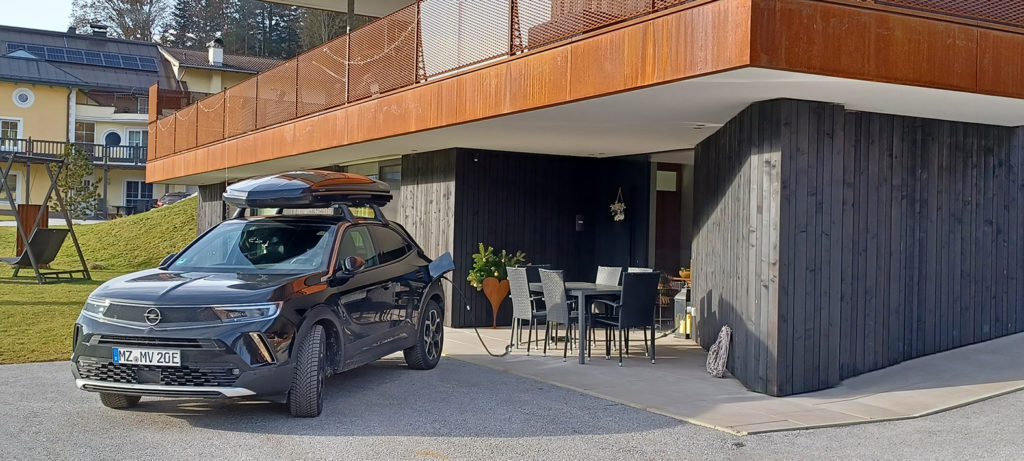
February 2023
